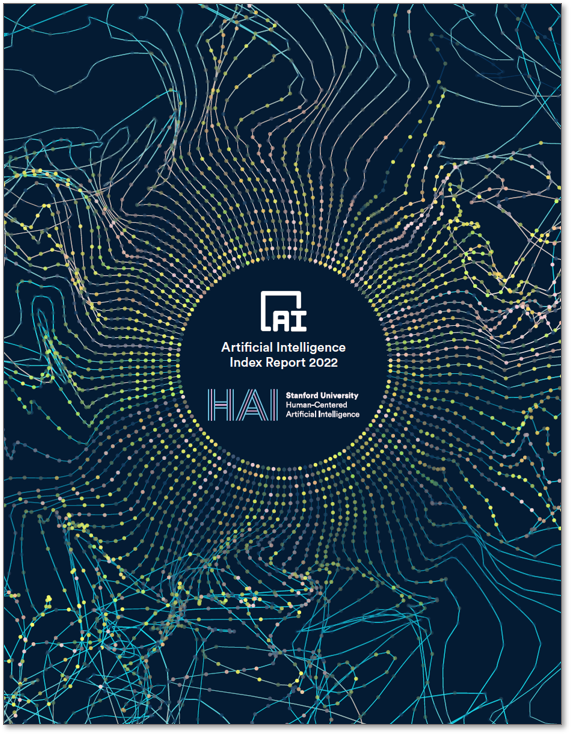
Artificial Intelligence Index Report 2022
Key takeaways:
Private investment in AI soared while investment concentration intensified:
- The private investment in AI in 2021 totaled around $93.5 billion—more than double the total private investment in 2020, while the number of newly funded AI companies continues to drop, from 1051 companies in 2019 and 762 companies in 2020 to 746 companies in 2021. In 2020, there were 4 funding rounds worth $500 million or more; in 2021, there were 15.
U.S. and China dominated cross-country collaborations on AI:
- Despite rising geopolitical tensions, the United States and China had the greatest number of cross-country collaborations in AI publications from 2010 to 2021, increasing five times since 2010. The collaboration between the two countries produced 2.7 times more publications than between the United Kingdom and China—the second highest on the list.
Language models are more capable than ever, but also more biased:
- Large language models are setting new records on technical benchmarks, but new data shows that larger models are also more capable of reflecting biases from their training data. A 280 billion parameter model developed in 2021 shows a 29% increase in elicited toxicity over a 117 million parameter model considered the state of the art as of 2018. The systems are growing significantly more capable over time, though as they increase in capabilities, so does the potential severity of their biases.
The rise of AI ethics everywhere:
- Research on fairness and transparency in AI has exploded since 2014, with a fivefold increase in related publications at ethics-related conferences. Algorithmic fairness and bias has shifted from being primarily an academic pursuit to becoming firmly embedded as a mainstream research topic with wide-ranging implications. Researchers with industry affiliations contributed 71% more publications year over year at ethics-focused conferences in recent years.
AI becomes more affordable and higher performing:
- Since 2018, the cost to train an image classification system has decreased by 63.6%, while training times have improved by 94.4%. The trend of lower training cost but faster training time appears across other MLPerf task categories such as recommendation, object detection and language processing, and favors the more widespread commercial adoption of AI technologies.
Data, data, data:
- Top results across technical benchmarks have increasingly relied on the use of extra training data to set new state-ofthe-art results. As of 2021, 9 state-of-the-art AI systems out of the 10 benchmarks in this report are trained with extra data. This trend implicitly favors private sector actors with access to vast datasets.
More global legislation on AI than ever:
- An AI Index analysis of legislative records on AI in 25 countries shows that the number of bills containing “artificial intelligence” that were passed into law grew from just 1 in 2016 to 18 in 2021. Spain, the United Kingdom, and the United States passed the highest number of AI-related bills in 2021 with each adopting three.
Robotic arms are becoming cheaper:
- An AI Index survey shows that the median price of robotic arms has decreased by 46.2% in the past five years— from $42,000 per arm in 2017 to $22,600 in 2021. Robotics research has become more accessible and affordable.
Document Details and Download
Website Source or DOI Link
Date published
1 November 2022
Publisher (Company, Organisation)
Stanford University
Document(s)






Artificial Intelligence Index Report 2022 0 reviews
Login to Write Your ReviewThere are no reviews yet.